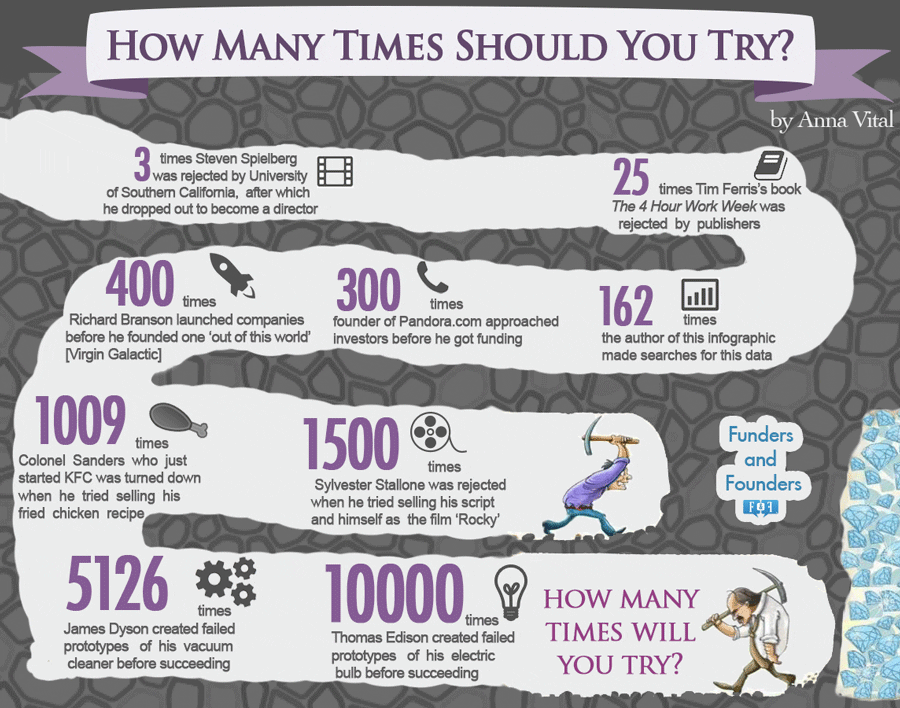P2P is now an utterance that commonly haunts and regularly hangs by the mouths of both pin-stripe suited financiers at Wall Street as well as hoodied entrepreneurs at Silicon Valley when deep discussions happen over the future development of financial services but what exactly is it and more importantly, what ramifications does it hold for the future course of finance?
Peer-to-Peer (P2P) Transfer Services facilitate the direct transfer of funds between individuals, generally from their credit cards or bank accounts via the internet and/or mobile phones as the primary mediums for such services. To date, most P2P transfer services have followed and can be typified by 2 conventional models. The first model, which was originally established and adopted by PayPal, sees consumers connecting their bank account to the user accounts offered by P2P providers, which they may then use to directly engage in near-instant transfers between members of the network. Alternatively, many recent models (such as that adopted by Square) append on the existing network-rails and new transaction technologies offered by major card providers (i.e. MasterCard, Visa) such as the Original Credit Transaction (OCH), which enables users of their platforms to perform near-instant transfers with their debit cards alone without necessarily attaching a bank account. All in all, P2P transfer services directly or indirectly side-step traditional fund transfer services (such as wire-transfer), as many strive to create a faster, easier and more convenient way to engage in the fund transfers than existing services and traditional methods.
When comparatively assessed, P2P Transfer Services offer several distinct advantages over the traditional fund transfer services offered by banks. These advantages can be aggregated and considered as the following:
Accessibility
P2P offers improved accessibility to fund transfers services for users. Whereas, many traditional fund transfer methods still involve varying degrees of physically accessing the bank and/or complex procedural requirements, (examples may include cheques, remittances and currency exchange.), most P2P platforms provide a straightforward no-frills service that harnesses the internet and internet-enabled mobile devices to facilitate the transfer of funds from potentially any location that has internet access. They are built around interactive, mobile-friendly interfaces that emphasise the customer experience. Registration happens online and saves trips to the banks, IBAN’s are replaced with email addresses and phone numbers. Without many proscriptive or complex procedural requirements (i.e. such as those requiring physical access-points, overbearing requirements in downloading and signing up) to access the services themselves, such platforms allow even “the most isolated (users) to engage in commercial activity”. This distinct characteristic has resulted in the growth of P2P platforms in many developing countries, where citizens lack direct access to bank institutions and infrastructures. An example of this can be seen in the market penetration of M-Pesa in Kenya, which has become the dominant way for domestic money transfers within the country.
Speed
The processes and models that underlie many P2P transfer services has enabled many providers to offer a faster service compared to traditional fund transfer methods. Specifically, innovations in technology and business models as well as the lack of regulation in many countries have allowed P2P transfer platforms to develop and provide to consumers unmatchable fund transfer speeds. This can be best seen in the context of cross-border money transfers. In the conventional (regular) model of cross-border money transfers, consumers have to access the bank’s premises or use another instrument to pay for the transfer. After which, the bank usually does not process the individual’s transfer until the end of the day, when it aggregates and sends all transactions that it has gathered throughout the day (as a singular transaction) along with appropriate file preparation to the Settlement Bank which is then transferred via SWIFT (or another similar network). The Receiving and Remittance Banks adjusts and implements the exchange rate before it finally arrives in the Beneficiary’s account. As a result of the intricate processes involved, cross-border money transfers can often take more than 2 days or more. On the other hand, providers like TransferWise allow for near-instant cross-border transfers as its model routes cross-border transfers differently. Rather than engaging in a direct transfer through conventional routes (as stated above), TransferWise redirects different recipients of equivalent transfers that are going in opposite directions and provide the funds from a pool of local funds that it has amassed domestically in each country.
Low-Cost
Building upon the understandings established so far, it is not surprising that P2P providers is able to offer a substantially lower-fee for transferring funds. As many of the platforms do not need to establish their own financial infrastructures or devices) and pursue more cost-effective means of conducting money transfers (as is the case with TransferWise). Resultingly, the operational costs of many P2P platforms are very low compared to banks. This has allowed such providers to offer lower costs for its services that many have strategically employed to build user-base and market share. This can be clearly observed in comparing rates between P2P providers and banks for cross-border transfers, many of which are between 0.5% to 0.15% whilst Banks usually adopt commissions of 5% or above.
Despite these advantages, in many aspects, P2P Transfer Services have also been unable to match advantages enjoyed by the bank.
Trust
To begin with, many have been reluctant or slow to adopt P2P transfer services because of doubts over security and the lack of trusts with many startup P2P providers. In a recent survey, 30% of consumers surveyed in the United Kingdom expressed their belief that many online providers cannot be trusted with their personal information. Such figures have been seen in other research reports, that undoubtedly demonstrate that despite the recent proliferations of P2P platforms, many consumers believe that the banks are in a better position to protect sensitive information. Such beliefs are based on perception and belief of consumer that the banks possess greater track record, reputation and resource to safeguard their security. Furthermore, banks are subject to comprehensive state regulations in many countries that protect consumer’s funds as well as proscribing liability which foster an image of required accountability. As a result of which, many consumers have tolerated the slower and more expensive fund transfer services offered by banks on the basis of a perceived trust premium that they believe is enjoyed with such services.
Service
Banks which generally possess great resources and capabilities are able to provide a vast amount of supplementary services in addition to fund transfer services offered. For example, the wide availability of local premises are desired by some consumers that prefer physical accessibility and interaction with service providers. Furthermore, security services that are tied to fund transfers such as real-time notification of account activities, active verification, dispute resolution centers and action fraud teams are services that are non existent with many P2P providers as they lack the resources and departments to realize them.
Nevertheless, in recent years, many P2P fund transfer startups have seen substantial development and growth. In fact, P2P transactions now stand at $ 1 trillion dollars and mobile P2P transactions are expected to increase by $ 86 Billion in the next 3 years. Indeed, many providers are encroaching on the market share held by banks. The best can be seen in the international remittance industry. International remittance has become a particularly active industry for P2P fund transfer startups where this can be seen. The industry is expected to grow to $700 billion in 2016 from $436 billion in 2014 as more money is sent primarily from developed economies to developing and emerging ones while the US remains the largest market with 10% of the market. According to a recent Goldman Sachs’ Report, over the next few years, $6 billion of profits found within international transfer market is at risk because of new fintech entrants. This figure is only a representation of the current state of affair, which may be cumulative as current P2P providers build up userbase or more entrants enter the scene. Nevertheless, there are indeed many players currently moving into and growing within the scene.
Some of the most notable startups and key movers in the current industry include:
| Transferwise, an online-only money transfer service that has been able to charge very low commission rates and mid-market exchange rates by developing an innovative business model that matches consumers directly and localizes transfers. Launched in 2011, Transferwise has been growing 15% to 20% month-on-month, and it has transferred more than $3 billion using the platform, saving its customers money in the process. Transferwise currently supports over 300 currency routes and has been recently valued at over $1bn US and has been backed by many important investors including US Based VC Andreessen Horowitz. |
| WorldRemit, an online transfer service that also allows for cash-pick ups. Initially launched in London in 2011, the company aims at to disrupt the remittance market by offering lower rates. It currently processes over 250,000 transactions per month. |
| Xoom, a US-based remittance company that specializes in international payments from the US to 37 countries including China, India, Mexico and Brazil. In 2014, the company helped move $6.9B generating $160m in revenues. Xoom was recently acquired by PayPal, which aims at improving transfer services and leveraging its 169,000,000 active users. |
In today’s globalized economy with the proper investment, such startups can grow tremendously fast as they target and solve a specific customer pain and offer something new, exciting, and financially promising. According to CB Insights, the average cost to launch a startup is a thousand times lower in 2011 than in 2000 which naturally has led to lower entry-barriers. What’s in common for among all the major players highlighted above is that they have actively and quickly established their own markets and seen unprecedented growth.
More importantly, beyond the remittance industry, P2P fund transfer has successfully been applied in the context of (mobile) payments and recently seen great penetration in emerging markets such as China. China has seen a parallel rapid development of unconventional third party payment companies like Alipay and Tenpay. The growth of these payment methods can be understood by the fact that conventional payment methods are both less rooted and less convenient for consumers. Based on recent research from Goldman Sachs the opportunity for the emergence of unconventional payments methods is further attributed to the relatively low penetration of credit card usage (only 23% of card transaction volume in 2013 vs. 44% for the US). Contrastingly, Alipay, which is the leading service of this kind in China was introduced within the Chinese Internet giant Alibaba “as a way of facilitating payment between buyers and sellers where there is limited trust and no physical contact”. Progressively it achieved a dominant position even as an independent payment services employed outside Alibaba group. Alipay is part of third party online payment which according to iResearch Consulting Group accounts for approximately 60% the total volume of online payments and it is growing increasingly reaching $ 5 trillion yuan in 2013. This is an important point, as from a POS(point-of-sale) perspective, mobile payments may be quickly replacing debit and credit card payment methods, especially when one takes into account the rise of mobile payments with the rise of complementary payment technologies being developed such as NFC (i.e. whereby your phone can be used as a card) by top technology firms. Furthermore, with its own P2P features, the user base is growing at an unprecedented rate and penetrating emerging markets.
The overall growth and consolidation of P2P providers can be explained by a number of trends stemming from advancements in technology, changes in regulation, as well as new demographic shifts that are making their mark in the current landscape by altering the traditional ecosystem.
In terms of regulations, one notable trend is the increased effort by governments and regulatory bodies in cracking down on money-laundering and fraud, specifically in the realm of international C2C money transfers. Compliance with imposed protocols constitute an increased cost for huge banks and established money transmitters. According to a report by Goldman Sachs Global Investment Research, ongoing regulatory and enforcement costs impose a regulatory burden around 4% for established players versus less than 1% for new incomers, thus benefiting new entrants and allowing them to be more competitive.
Importantly, demographic trends have a powerful influence on the adoption of any technology or habit as well. A crucial factor impacting the embracing of smaller money transfer services is the consumer’s’ level of comfort regarding their sharing of personal information. AlixPartners have recently produced a study of US consumers which indicates that comfort with public availability of personal information is a function of generational and cultural factors. 55% of the respondents under the age of 35 were either “very comfortable” or “extremely comfortable” with sharing personal information with corporations in exchange for offers or rewards. This percentage has an inverse relationship with age group; 42% for respondents between the ages of 35 to 44 and 31% for those between the ages of 45 and 54. This information suggests that the younger generations are ready to overcome the “legitimacy” barrier held by established players and experiment with newer and more innovative forms of money transfer.
Within this context, the World Economic Forum has suggested, in its recent report: ‘The Future of Financial Services’, that these non-traditional/dominant providers may come to directly compete with current banking fund transfer services as superior alternatives and may transform into dominant solutions when they are able to achieve the critical mass. These implications for banks are hard to ignore as many of these services not only represent revenue streams for banks and their operations but more importantly, significant value-adding services for their customers that may lock them in for the provision of other financial services offered. As such, the growth has certainly pressured certain banks as seen in their responses. Banks have made several attempts to respond in various forms. Some banks have been trying to match and compete with the rates offered by P2P startups by improving their transfer service rates through various ways. Others attempt to resolve accessibility issues. For example, ICICI Bank of India has been on the forefront of adapting to changes as it has been improving its online services to become one of the most convenient and customer friendly remittance banks, with the ambitious aim to be one of five largest remittance companies. Whereas, others have even tried to directly compete and participate in the P2P fund transfer scene by coming up with their very own platform that offers similar services to many P2P providers. An example of this is Barclay’s Pinggit, a mobile application on most mobile operating devices, developed exclusively by Barclays, for their account holders to easily send and receive money from one another, albeit with significant limitations to amounts transferred.
Despite this, there has yet to be a bank that has introduced or have been able to pursue a successful response in the face of the P2P’s unprecedented growth. This is because banks face innate challenges to respond due to their nature and size as large and bureaucratic firms. For example, in the US, all of the top 20 banks employed at least 12,500 employees and averaged around 58,000 employees. Furthermore, the top four banks in the world have assets worth $14.7 trillion, equaling approximately 93% of the US GDP. Almost all of the large banks are public corporations. This poses a challenge for banks trying to gain traction into the highly innovative field of mobile P2P payments: as businesses cross $25 billion in revenues and start publicly trading, they lose a lot of innovating power.
There are many explanations behind this phenomenon. One argument states that such companies become more risk-averse, and are more focused on short-term profits, as they have to meet certain investor expectations. Furthermore, as they employ more people and run well-structured Human Resources departments, they tend to employ more risk-averse personnel and less “Innovation Leaders”. In comparison to banks, third party mobile payments providers tend to be small in size, and therefore don’t have the innovation limitation in this highly evolving technology field. Even though some statistics indicate the superiority of small firms’ ability to indicate, many large firms have surpassed this challenge (Apple, Google); therefore, it is not impossible for banks to retaliate using constant innovation.
Even if large banks continually innovate enough to stay competitive, the market landscape in their desired economy of operation may create obstacles for them to do so. The bank’s’ success is highly correlated with the consolidation of the banking sector. For example, the limited degree of success for banks to retaliate in the US can be explained by the fact that over 8,000 banks exist in the market, compared to only 111 in the UK. The consolidation of the banking sector in the UK has facilitated the birth of the Payments Council to ensure the utility of payment services within the UK. The Payments Council, dominated by large players in the banking industry, can coordinate retaliation efforts with greater ease. An example of such a coordination effort is apparent in the case of UK P2P payment company Paym, which is backed by 9 out of 10 large UK banks. Therefore, the banking sector’s ability to fight back is highly affected by the market landscape within the economy, and may differ from location to location.
In totality, banks face various challenges in retaliating against third party P2P payment companies.


































